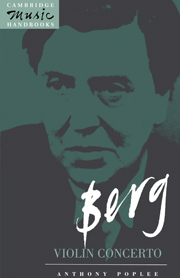5 - Harmony, tonality and the series
Published online by Cambridge University Press: 05 June 2012
Summary
Tonal or atonal?
Writing in 1949 of his Second String Quartet (1907–8), whose fourth movement is frequently cited as an early example of ‘atonality’, Schoenberg outlined the dilemma which this music exposed through its interactions of counterpoint, harmony and form:
… there are many sections in which the individual parts proceed regardless of whether their meeting results in codified harmonies. Still, here, and also in the third and fourth movements, the key is distinctly present at all the main dividing-points of the formal organization. Yet the overwhelming multitude of dissonances cannot be counterbalanced any longer by occasional returns to such tonic triads as represent a key. It seemed inadequate to force a movement into the Procrustean bed of a tonality without supporting it by harmonic progressions that pertain to it.
For Schoenberg, the difficulty was only to be answered by the renunciation of tonal centres – a ‘decisive step’ which he took immediately in the songs Op. 14 and Op. 15 and the Piano Pieces Op. 11. It was this renunciation which others – wrongly, he thought – characterised as ‘atonality’.
Berg's Violin Concerto cannot be regarded as ‘atonal’ in these terms, for there is no evidence in it that tonal centres have been renounced; on the contrary, the returns to triadic formations at points of formal articulation appear to conform exactly to the terms of Schoenberg's discussion.
- Type
- Chapter
- Information
- Berg: Violin Concerto , pp. 65 - 90Publisher: Cambridge University PressPrint publication year: 1991



